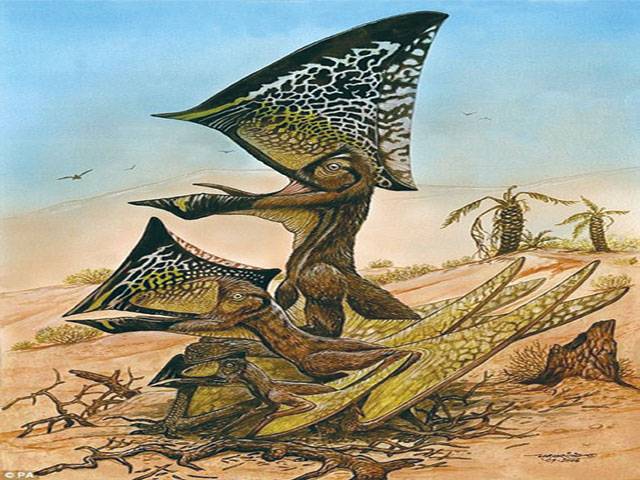MOL
BRASILIA
Evidence that a colony of previously unknown flying reptiles lived around a desert lake around 100 million years ago, has been uncovered by scientists.
Fossil remains of at least 47 pterosaurs with wingspans ranging from two to eight feet (65 to 235cm) were discovered at Cruzeiro do Oeste in southern Brazil. But the huge number of bones could indicate that hundreds of young and adult individuals perished there.
t is the first time scientists have located a pterosaur ‘bone bed’ containing fossils from many individuals of the same species. The site where they were found covers an area of less than 215 square feet (20 square metres). The pterosaur Caiuajara dobruskii had a large bony crest on the top of its head that changed from being small when it was young, to large and steep in adults.
It is thought to have been a gregarious species that learned to fly at a very young age. Dr Alexander Kellner, from Federal University of Rio de Janeiro, said: ‘Based on the available information, we conclude that Caiuajara dobruskii lived in colonies around an inland lake situated in a desert.
Writing in the journal Public Library of Science ONE, he continued: ‘The presence of three main levels of accumulation in a section of less than one metre suggests that this region was home to pterosaur populations for an extended period of time. ‘It is also plausible that Caiuajara was a migratory pterosaur that visited this area from time to time, although the first possibility is favoured here.
‘The causes of death remain unknown, although similarities with dinosaur drought-related mortality are striking. ‘However, it is also possible that desert storms could have been responsible for the occasional demise of these pterosaurs.’ The fossil record of pterosaurs, which lived alongside the dinosaurs but were unrelated to birds, is patchy. Their bones were fragile and few of the creatures lived in places where fossils form easily, making pterosaur finds rare. Most have consisted of incomplete skeletons of a single individual.
Tuesday, April 16, 2024
New species of flying pterosaur discovered

Caption: New species of flying pterosaur discovered
Abducted minor girl rescued within 12 hours
April 16, 2024
Six illegal constructions demolished in LDA operation
April 16, 2024
LWMC completes special waste operation in key areas
April 16, 2024
CM Maryam seeks comprehensive development plan for Murree
April 16, 2024
Political Reconciliation
April 16, 2024
Pricing Pressures
April 16, 2024
Western Hypocrisy
April 16, 2024
Policing Reforms
April 15, 2024
Storm Safety
April 15, 2024
Democratic harmony
April 16, 2024
Digital dilemma
April 16, 2024
Classroom crisis
April 16, 2024
Bridging gaps
April 16, 2024
Suicide awareness
April 15, 2024
ePaper - Nawaiwaqt
Advertisement
Nawaiwaqt Group | Copyright © 2024





